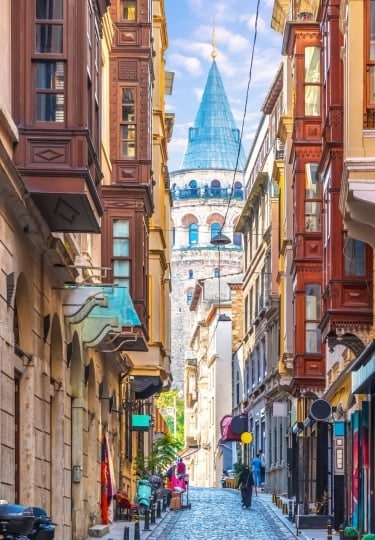Istanbul, stretching across the European and Asian shores of the narrow Bosphorus, is divided into 39 districts, which are in turn made up of sometimes dozens of neighborhoods.
Like any major city, it has swallowed up various smaller settlements during its growth. These give the neighborhoods of Istanbul a distinct, enchanting character.
You can find corners that help you recall the city that was once known as Constantinople, or even Byzantium. Then you find yourself strolling along an elegant avenue that could be in Paris, Rome, or New York.
Here are the ten best neighborhoods of Istanbul to explore.
Sultanahmet
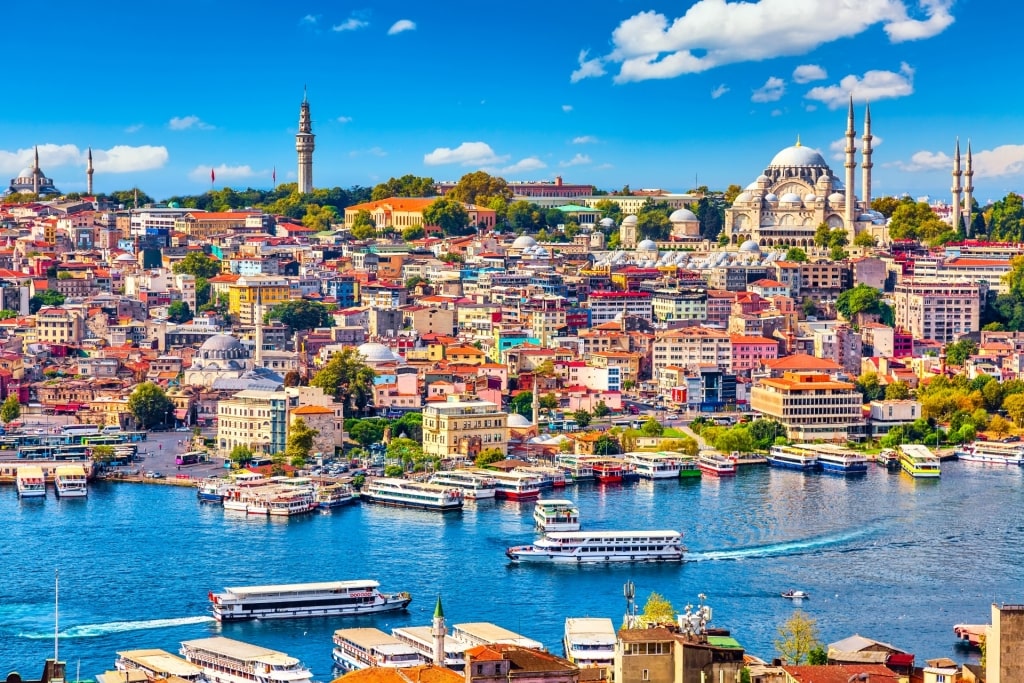
Sultanahmet
You could probably say you had been to Istanbul if you never went beyond Sultanahmet, given that the neighborhood includes almost all the city’s major sights.
In Sultanahmet, you’ll find some of the best places to visit in Istanbul, such as the sixth-century Hagia Sophia, the Topkapi Palace of the Ottomans, and the remarkable Blue Mosque.
Any first-time visitor to the city will also want to see the sixth-century underground Basilica Cistern, the fascinating Museum of Islamic Art, and the bewilderingly large Grand Bazaar.
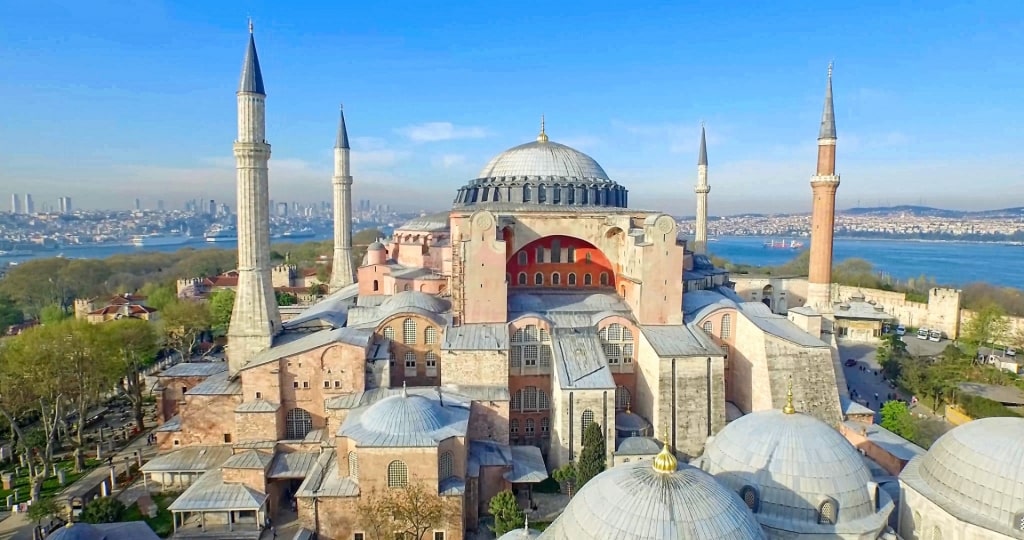
Hagia Sophia
This area was the center of the late Roman, Byzantine and Ottoman empires. Many of its historic buildings, such as the Hagia Sophia, are vital to understanding the history of world architecture.
Sultanahmet stands on a peninsula on the European side of the Bosphorus, facing Asia. Its dramatic setting is very much part of its history and present-day photographic charm.
Sultanahmet is buzzing by day but quieter in the evening, so you might want to explore further afield for a true taste of the city’s culinary scene.
Kadıköy

Kadıköy
Facing Sultanahmet from the Asian side of the Bosphorus is the arty neighborhood of Kadıköy. A short, scenic ferry ride takes you to a different world of cafés, art galleries, and local shops.
The first stop for anyone with an interest in food—or photography— should be the Kadıköy Produce Market, one of the best markets in Istanbul. A popular stop on food tours, this has long been a destination for Istanbul foodies.
You’ll see colorful seasonal vegetables, piles of roast nuts, glistening honeycombs, and lots of pickles. The fish market is central to the area’s identity—and to the city’s.

Lahmacun
Close by are dozens of cafés and restaurants, many serving imaginative new takes on traditional local dishes. From lahmacun (“Turkish pizza”) to lokum (Turkish Delight), you’ll find plenty to eat or take away as a souvenir.
The arty feel of the neighborhood is boosted by street murals supported by an annual festival. Local and international artists have contributed their work to the district’s tree-lined streets since 2013.

Antiques
Other art forms supported here include opera, in the 1920s Süreyya Opera House, and music, at the home of former Turkish rock star Barış Manço. You might even turn up some art treasures of your own on cobblestoned Tellalzade Sokak, known as the “Antique Dealer’s Street”.
Taksim
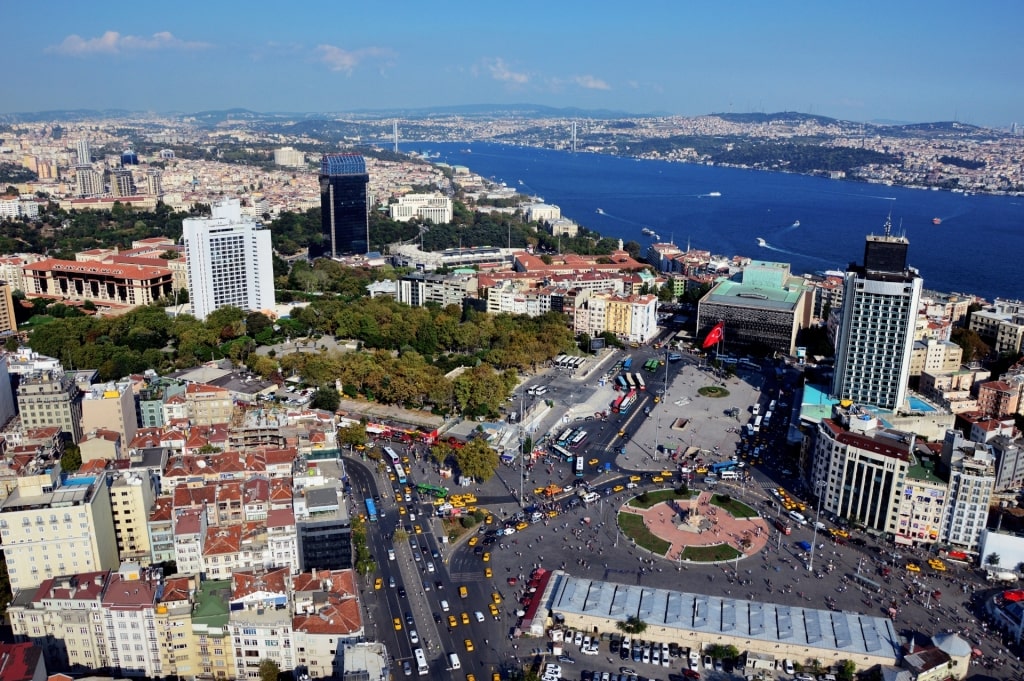
Taksim
Taksim is one of the best neighborhoods of Istanbul for bars, cafés and restaurants. It’s part of the Beyoğlu district that is the heart of modern Istanbul.
The neighborhood is centered on Taksim Square, home to Istanbul Metro’s Central Station.
Around the square are all the trappings of the modern city, from major international hotels to familiar fast food franchises. Branching off from it is the pedestrianized İstiklal Caddesi, or Independence Avenue.
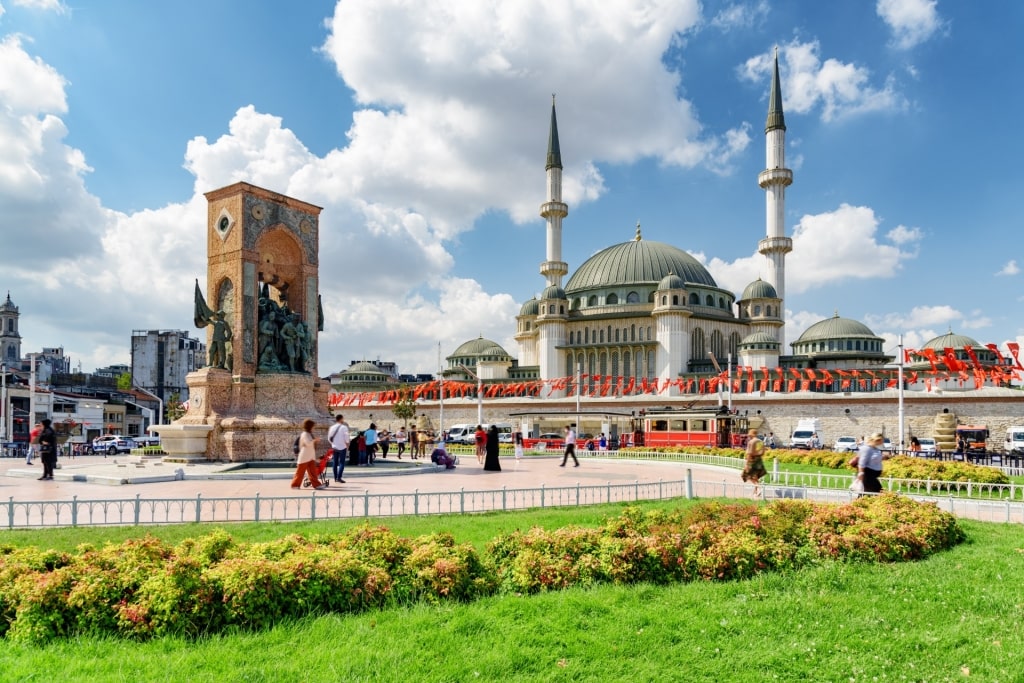
Taksim Square
The avenue is lined with upmarket shops, art galleries, and some of the city’s big-name restaurants. It’s a place to shop for Turkish souvenirs during the day, or stroll along in the evening with an ice cream.
Evening is also a good time to see the Atatürk Kültür Merkezi (AKM, or Atatürk Cultural Center) when it’s illuminated. During the day, you should visit AKM for its modern art gallery, and striking 1960s architecture.
Only reopened in 2021 after a major revamp taking 13 years, AKM is the center of a growing major arts district. This includes the refurbished Istanbul Museum of Modern Art, and the new home of the National Museum of Painting and Sculpture.
Balat & Fener
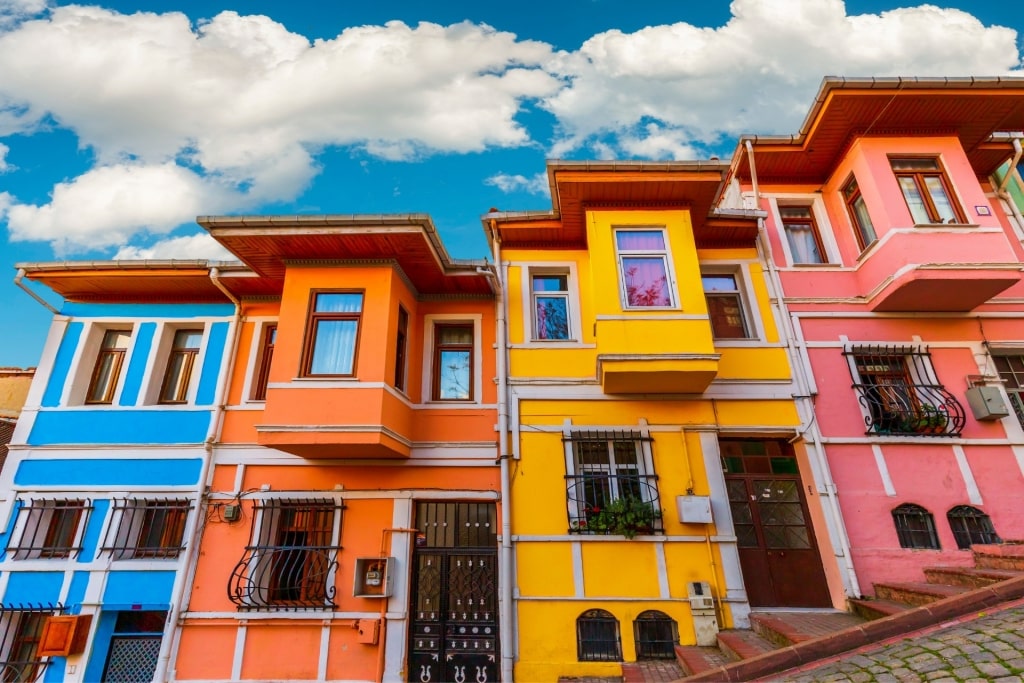
Balat
Istanbul’s Balat and Fener neighborhoods stand side by side, both rich in history. Along with the neighboring Zeyrek and Yenikapi, they were inscribed by Unesco on the World Heritage List.
With their narrow, cobbled alleyways, and terraces of historic Ottoman houses, both are perfect for meandering away from the busy next-door Sultanahmet. The influx of visitors has led to the opening of many young businesses, from coffee roasters to art galleries.
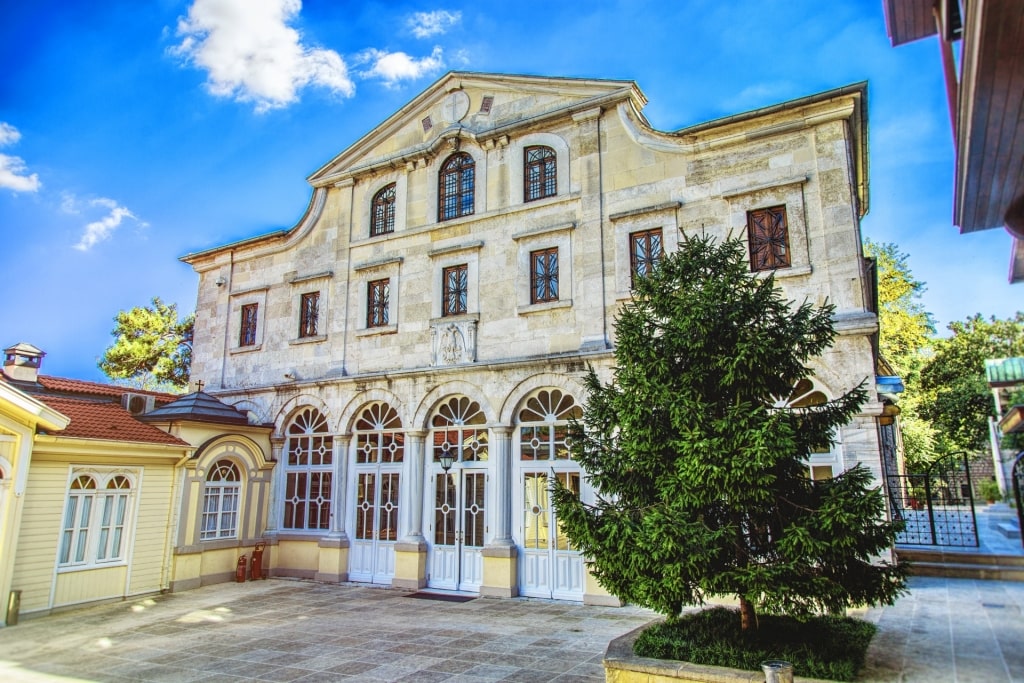
Cathedral Church of St George
Balat is the former Jewish district of Istanbul, while Fener was once home to Istanbul’s Greek Orthodox population. The latter’s Cathedral Church of St George is still a spiritual beacon for Orthodox Christians worldwide.
The church’s modest exterior, limited in scale by the laws of the Ottoman Empire, hides a rich, ornate interior. It is visited by a stream of pilgrims daily.
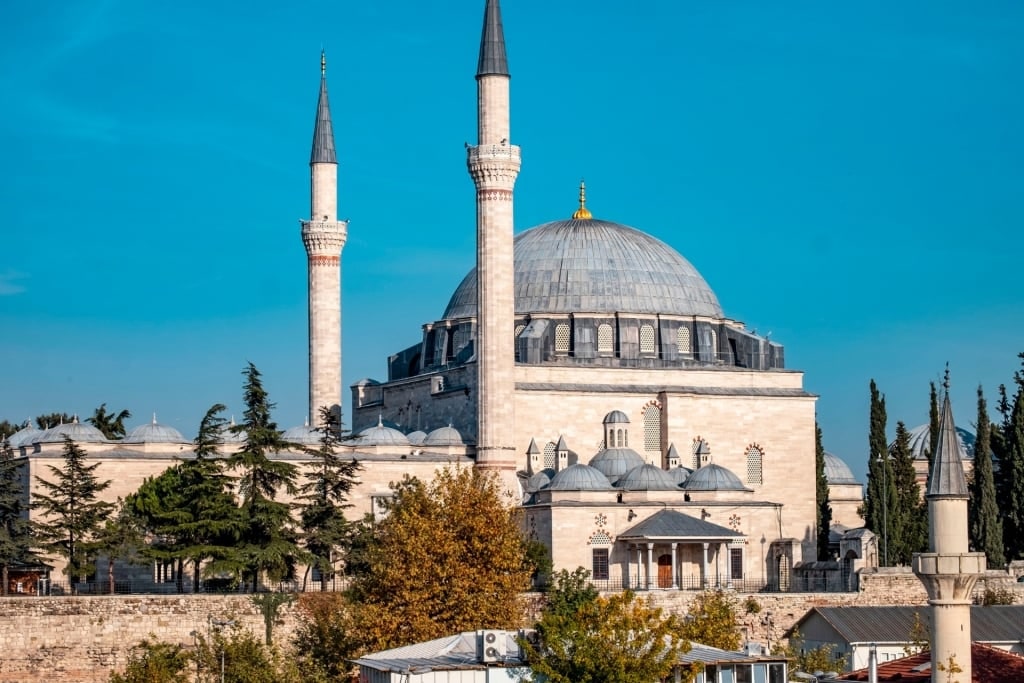
Yavuz Selim Mosque
The grand 16th-century Yavuz Selim Mosque is a contrast in both size and decor. Built by Sultan Süleyman the Magnificent, it commands a striking hilltop site.
The prefabricated Bulgarian St Stephen Church is a very unusual neo-Byzantine structure. Made in Vienna, the various cast iron elements were then reassembled on site in 1898.
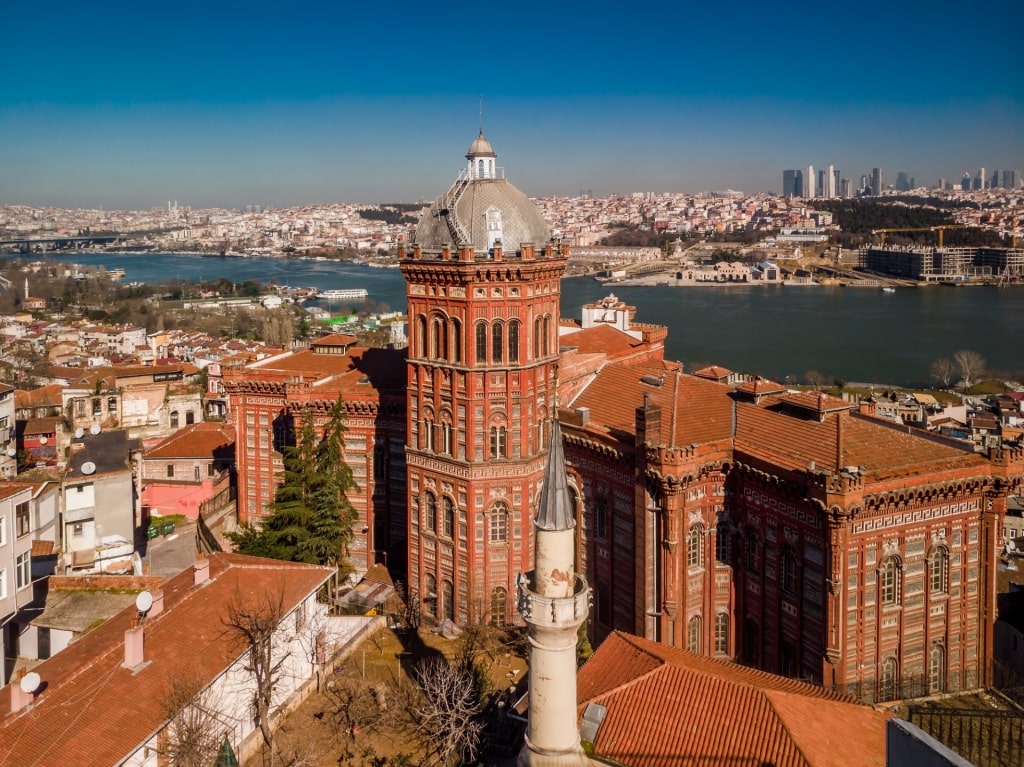
Greek High School
The massive red brick Greek High School (Rum Lisesi) is another striking building. Standing on a hill, it is compared by many to Harry Potter’s fictional Hogwarts.
Çıfıt Bazaar, once an outlet for Jewish tradespeople, is now an antique market. It’s almost as popular with photographers as the two districts’ colorful houses.
Nişantaşı

Nişantaşı
One of the most upmarket neighborhoods in Istanbul, Nişantaşı, part of the Sisli district, has been compared to Greenwich Village, although Nişantaşı is uniquely its own.
The name means “Target Stone”, as this was once where the Ottoman Sultans came to practice archery. You’ll still find four small obelisks if you walk around, each boasting of a record set by an archer.
Nearer in history are the elegant 19th and early 20th-century apartment blocks that now house many of Istanbul’s elite. You might spot a crowd of paparazzi gathering outside a trendy coffee shop frequented by a film star or other local celebrity.

Jewelry
The upmarket feel extends to the area’s luxury shops and destination restaurants, many along exclusive Abdi İpekçi Caddesi. As well as major international brands, you’ll see plenty of perhaps unfamiliar Turkish designer labels.
Since Istanbul is one of the best shopping cities in Europe, you’ll also discover shops specializing in everything from perfumes to jewelry. In the food line, there are excellent chocolatiers and pastry shops for some tasty souvenirs.

Teşvikiye Mosque
No surprise, either, to find some of the city’s most exclusive art galleries here, such as Gallery Nev. At the unusual porticoed Teşvikiye Mosque—built in neo-baroque style in 1854, and now associated with celebrity funerals—you’ll find two of the district’s historic target stones.
Karaköy

Karaköy
Karaköy has a familiar story. A former port area, red light district, and financial quarter, it fell into a state of neglect until seized on by developers.
From about 2012, the neighborhood has boomed as a place for bohemians, start-ups, and nightclubs. Much of that change is illustrated by SALT Galata, built in 1892 for the Imperial Ottoman Bank but is now an arts space.

Fish sandwich
The historic layout of narrow, rambling streets remains, now lined with cafés, bars, and restaurants, many specializing in fish. Office workers and clubbers cross paths as they come and go from their respective venues.
Artists and designers have seen an opportunity to open designer boutiques and avant-garde galleries. From fashion to home decor, you’ll find some of the best in the new Turkish style.
Several art galleries in Karaköy are also now among Istanbul’s most interesting. Search out the modern Jewish art in Schneidertempel Art Gallery, a former synagogue, or the cutting-edge artSümer.

Galataport
Galataport, Istanbul’s Cruise Port, is the brand new home of some 250 shops and restaurants, and the Istanbul Modern art gallery. The redevelopment has also opened up a walkway around the shoreline, which had been off-limits for centuries.
Read: Best Beaches In & Around Istanbul
Galata Quarter
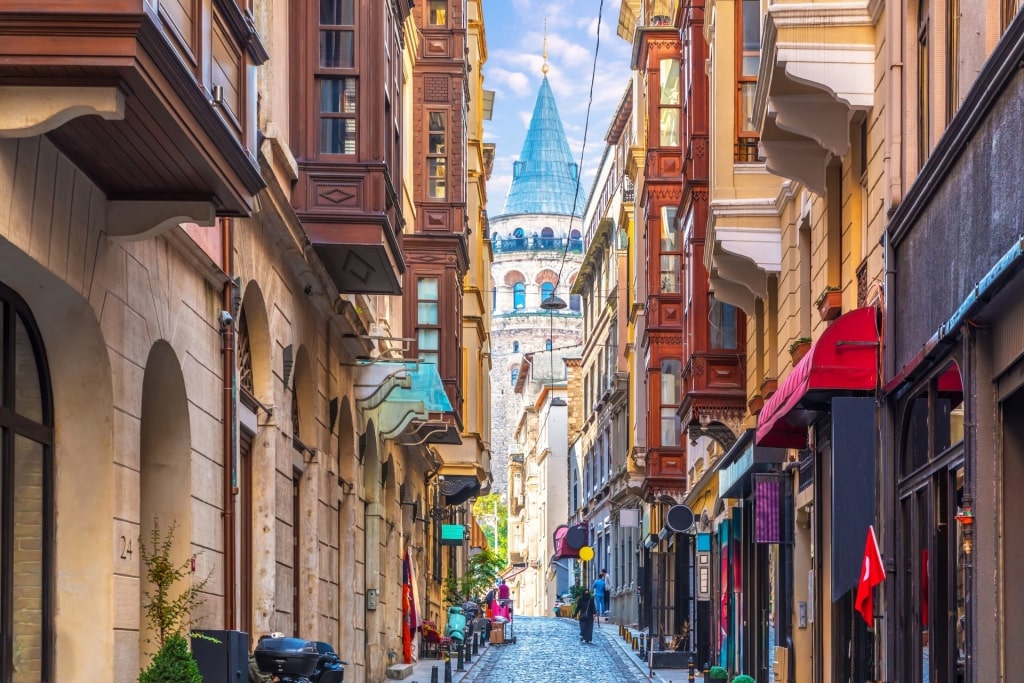
Galata Quarter
While Karaköy is the new name for the former Galata district, the Galata Quarter is part of the larger Beyoğlu district. It is centered on the famous Galata Tower, a much-photographed landmark on Istanbul’s Asian side.
Now a museum, the tower was built in Genoese style as a watchtower in 1348. Formerly part of a wall that protected the Genoese community, it was at the time the tallest building in Constantinople.
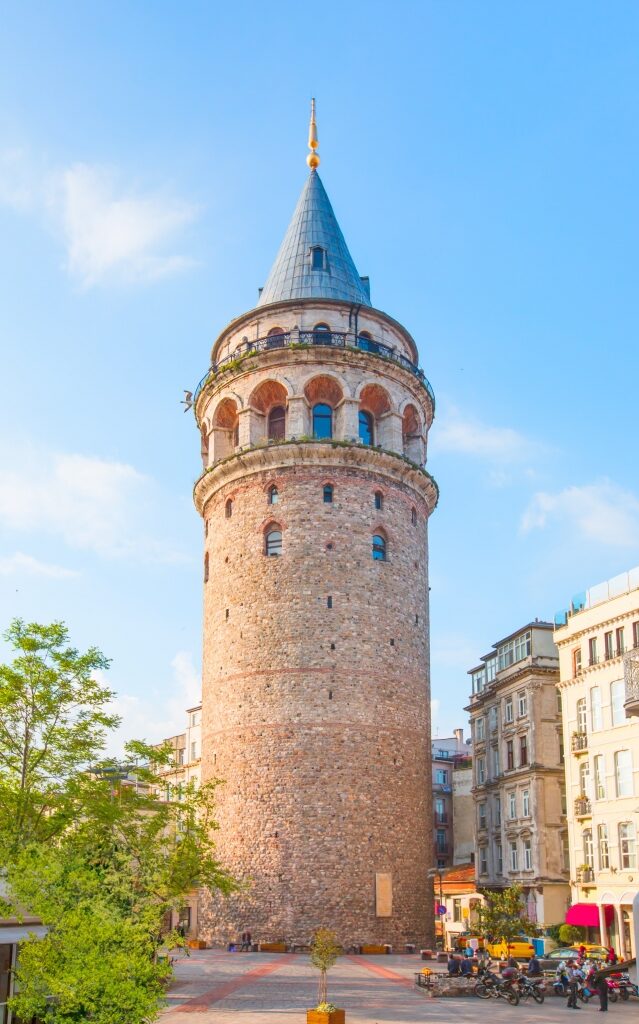
Galata Tower
Radiating from the tower are picturesque, cobblestoned streets. Generations of sightseers have led to these being lined with souvenir shops, cafés and restaurants.
Most of those visitors just come just to take in the view from the top of the tower (buy the city’s digital E-Pass in advance to skip the line). The top floor has sweeping, panoramic views of Istanbul’s skyline and the Bosphorus.
Nearby is the Mevlevi House Museum, where you can see a “Whirling Dervish” ceremony every Sunday. Also in the area is the Jewish Museum of Turkey, based in a former synagogue dating to 1823.
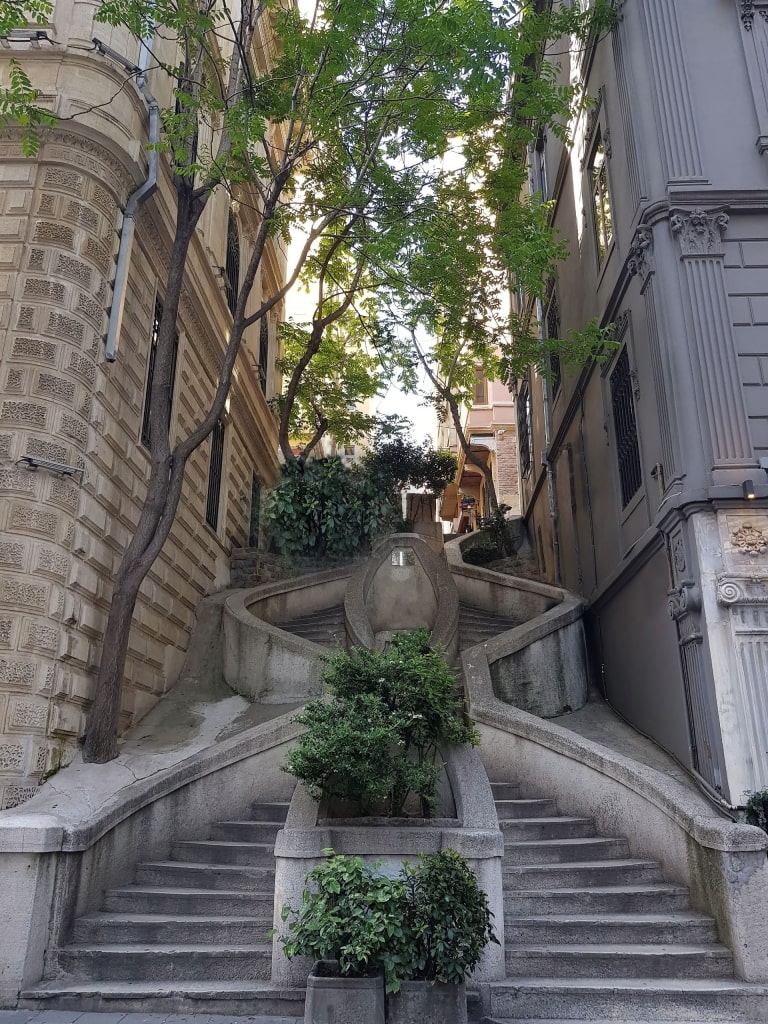
Camondo Stairs
Another must-see are the Gaudí-style Camondo Stairs, which connect you to Karakoy. They were built by a prominent local Jewish banking family, whose last members died in Auschwitz.
Akaretler
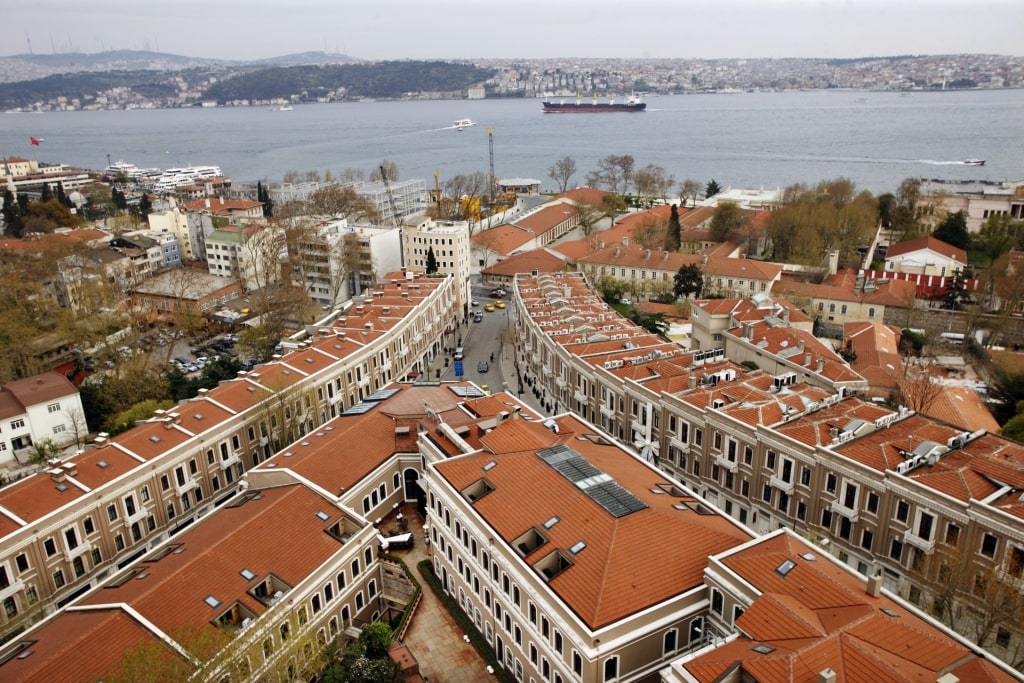
Akaretler
Akaretler is a small area of elegant, high-ceilinged, terraced houses, built in 1875 for high-ranking officials of the Dolmabahçe Palace. These have been recently restored as a premier retail, art, and office space.
Many major international brands were among the first occupants. Some have since moved on, to be replaced by less familiar, but more diverse local names.
Close to Nişantaşı, Akaretler has a similar upmarket feel. These high-end shops, galleries, and cafés in their beautiful Row Houses are central to that.
This is one of the best neighborhoods in Istanbul to find a designer wedding dress, a wonderful piece of sculpture, or a quiet wine bar. Of course, the area’s cafés and restaurants are equally varied and imaginative.
Akaretler is part of the Besiktas neighborhood, which is centered on Besiktas Square. Overlooking the Bosphorus, it’s a popular meeting point, full of cafés.
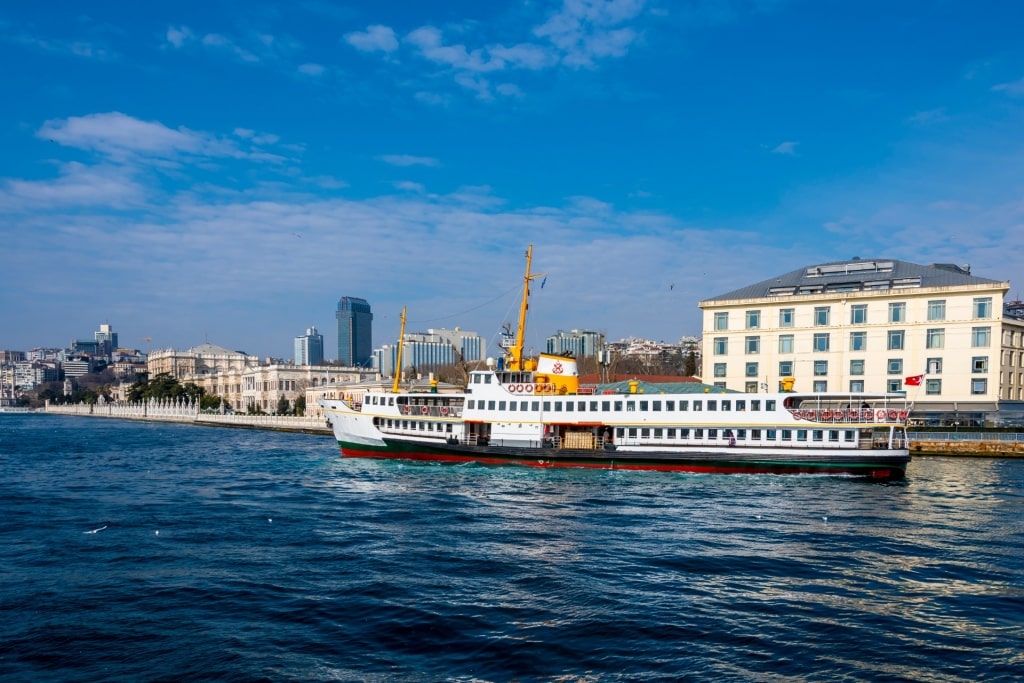
Besiktas Ferry Pier
Check out the historic Besiktas Ferry Pier, with a facade of century-old tiles. The Naval Museum is worth a visit for anyone interested in the history of one of the world’s greatest port cities.
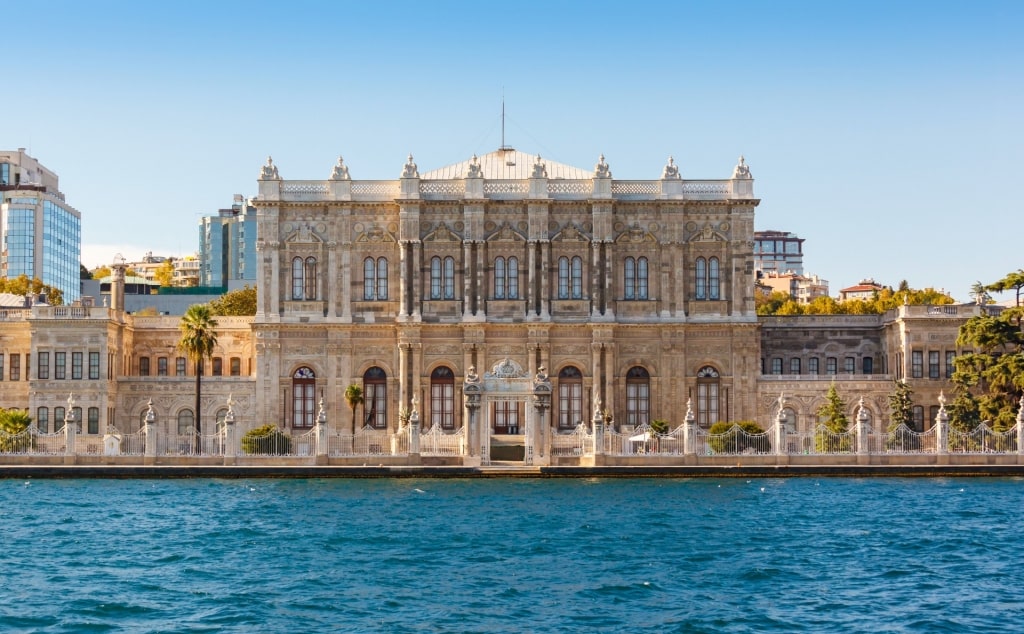
Dolmabahce Palace
The Dolmabahce Palace cost the equivalent of $2 billion in today’s money to build when finished in 1856. That debt started the collapse of the Ottoman Empire, but left a grand palace that would take a day to visit on its own.
Arnavutköy

Arnavutköy
Set along the Bosphorus, the former fishing village of Arnavutköy is still famous for its seafood. The fish restaurants along the glittering waterfront are a favorite evening destination for many.
To cater to the post-restaurant crowd, the area has also filled up with cocktail bars and pubs. It now rivals Taksim Square as the best neighborhood in Istanbul for nightlife.

Yali mansions
Part of the Besiktas district, Arnavutköy (“Albanian village”) is perhaps even more famous for its waterfront yali mansions. These historic wooden villas were once the summer home of rich Ottomans, and are still much-prized by the Turkish elite.
After a series of fires, a late 19th-century edict banned wooden houses in the city. There are now only 620 yali mansions left in Istanbul, some of the grandest of which have sold for the equivalent of millions of dollars.
Despite that, Arnavutköy is not a flashy neighborhood, but one that retains a quiet, friendly atmosphere. It’s a cosmopolitan place to stroll around, explore local shops, and enjoy the wide range of Turkish cuisine.
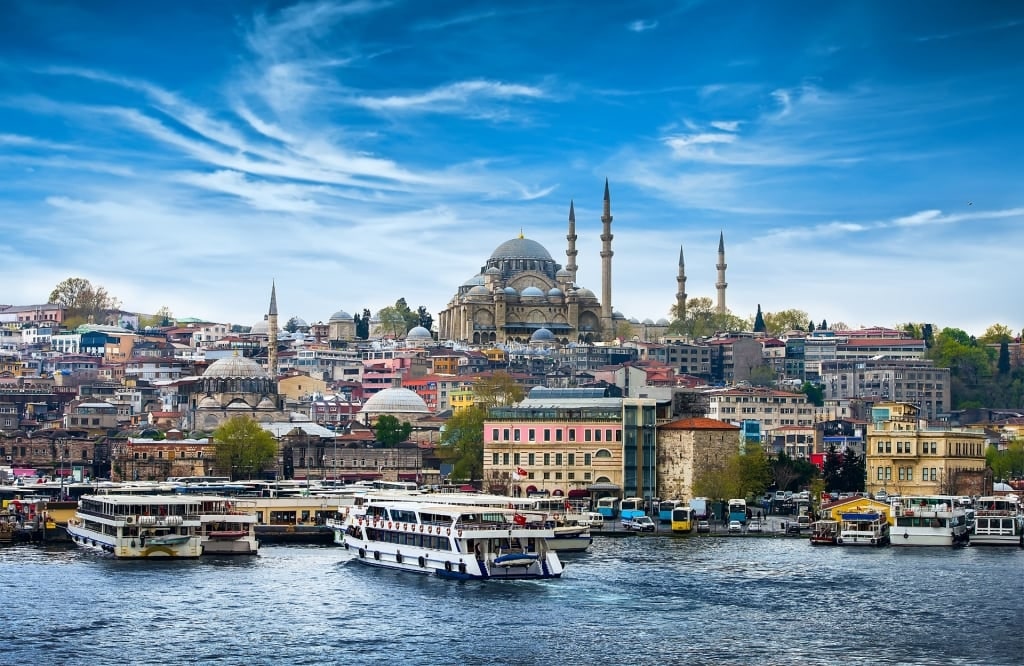
Istanbul
Has this guide to Istanbul’s many fascinating neighborhoods inspired you to wander its streets? Browse Celebrity’s Istanbul cruises to find the perfect vacation to this most historic of cities.
